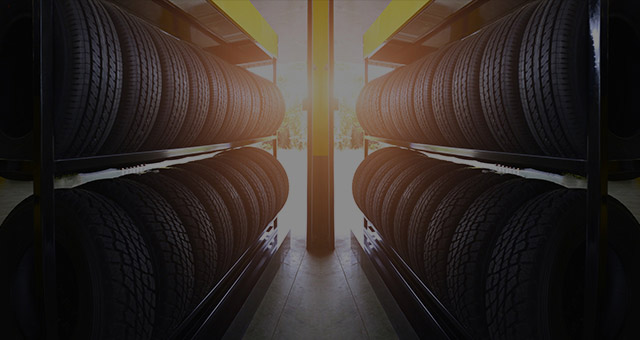Tire Solution: Recognizing Tire Pressure Tracking Solutions
Recognizing Tire Pressure Monitoring Solutions (TPMS) is a vital aspect of preserving ideal lorry efficiency and security when driving. With improvements in automobile technology, TPMS has ended up being a standard feature in modern-day lorries, supplying real-time information on tire stress levels. Diving much deeper right into the complexities of TPMS, one can discover the numerous components that compose this system and the significance of each in ensuring precise surveillance. From direct to indirect TPMS systems, the landscape of tire pressure surveillance is varied, each with its special collection of advantages and considerations. Keep tuned to decipher the complexities of TPMS, from maintenance suggestions to the undeniable advantages of keeping your tires appropriately inflated. tire shop morris.

Importance of TPMS
The value of Tire Stress Tracking Solutions (TPMS) lies in their capacity to enhance car safety and security and efficiency via real-time monitoring of tire pressure levels. Preserving the proper tire stress is critical for making certain ideal handling, stopping, and total safety of a car. TPMS provides drivers with immediate feedback on any overinflated or underinflated tires, permitting timely modifications to be made.
Elements of TPMS
Making up different crucial elements, a Tire Pressure Tracking System (TPMS) operates as an innovative security attribute in modern-day lorries. The major elements of a TPMS include sensing units, a control module, and a caution indication. Sensing units are generally located in the tire shutoff stem or affixed to the wheel assembly, where they gauge tire stress and send data to the control module. If it finds dramatically low stress in any of the tires, the control module processes this details and activates a warning. The warning sign, usually a sign on the control panel, notifies the driver to inspect the afflicted tire or tires. Some advanced TPMS models additionally show the real tire stress analyses for every tire, offering drivers with real-time information to guarantee optimum tire efficiency and safety. By monitoring tire stress continually, TPMS assists avoid crashes, lowers tire wear, and improves fuel performance, making it a critical element for vehicle safety and efficiency.
Kinds Of TPMS

On the other hand, indirect TPMS depends on the vehicle's wheel speed sensors to keep track of tire click to find out more pressure. This system finds underinflation by comparing the rotational rates of the wheels. Indirect TPMS is less costly than direct TPMS, as it utilizes existing sensing units within the automobile.
While direct TPMS provides much more precise readings, indirect TPMS is simpler in style and commonly calls for much less maintenance. Both systems have their limitations and advantages, and the option in between them commonly relies on aspects such as price, car make, and personal preference. Comprehending the distinctions between these 2 sorts of TPMS can assist vehicle proprietors make informed choices relating to tire maintenance and safety and security.
TPMS Upkeep Tips
Conduct routine checks on the tire pressure levels and contrast them with the TPMS readings to guarantee they are consistent. During tire rotation or substitute, make certain that the TPMS parts are managed thoroughly to protect against any kind of potential damage. If the TPMS cautioning light illuminates on the control panel, address the problem promptly by checking the tire pressures and the total system for any kind of mistakes.
Advantages of Appropriate Tire Pressure
Maintaining appropriate tire stress, as emphasized in TPMS Maintenance Tips, is essential for enjoying the various benefits related to optimal tire stress levels. Among the Get More Information main advantages of keeping the proper tire pressure is boosted gas effectiveness. When tires are correctly blown up, there is less moving resistance, causing better gas economic climate. Additionally, correct tire pressure guarantees also tire wear, extending the lifespan of the tires and promoting safer driving conditions. With the appropriate tire pressure, vehicles likewise have better handling and grip, specifically in unfavorable climate condition. This can boost overall driving efficiency and security for the driver and passengers. Additionally, maintaining optimal tire pressure can add to a smoother and extra comfy trip by decreasing vibrations and sound triggered by underinflated tires. In conclusion, the benefits of proper tire pressure go beyond simply tire longevity; they incorporate enhanced fuel efficiency, enhanced safety and security, much better vehicle performance, and overall driving convenience.
Conclusion
Finally, understanding tire pressure tracking systems (TPMS) is critical for maintaining optimum tire pressure and making sure car safety. By acknowledging the importance of TPMS, being familiar with its parts, knowing the various kinds offered, adhering to proper maintenance ideas, and recognizing the benefits of maintaining proper tire pressure, chauffeurs can enhance their driving experience and lengthen the life expectancy of their tires. Appropriate tire stress is key to efficient and risk-free car operation.

Comments on “Morris Tire and Alignment: Your Trusted Source for Reliable Service”